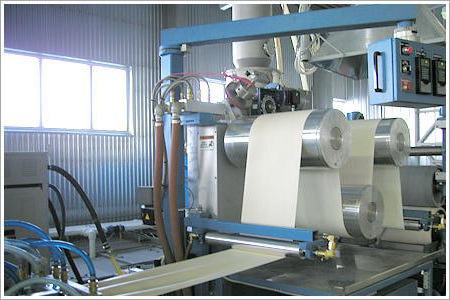Siding is a very common building material, which is used in the lining of not only residential but also industrial buildings.
It has many advantages that increase the demand for this product. Therefore, it is very beneficial to engage in the manufacture of the presented material.
Benefits of this product

It should be noted that such a business brings a good income. The fact is that the final product is in demand among almost all segments of the population, as it has some advantages. Naturally, before you buy equipment for the production of siding and start a business, you should deal with these advantages. So, the advantages of this product are:
- high decorativeness and a variety of shades;
- ease of installation;
- reasonable cost;
- resistance to negative environmental influences;
- does not require painting or additional protection against corrosion, mechanical shock;
- ecological cleanliness.
What components are needed to make the product?
Before you choose and install equipment for the production of siding, you need to understand what raw materials you need to work. Naturally, there are elements made of metal and wood, however, the most popular building material is polyvinyl chloride.
To make such a product, you will need the following ingredients:
- PVC
- modifiers and stabilizers that give siding strength, hardness and resistance to negative influences, as well as increase its service life;
- dyes, with the help of which the strips get the necessary color, as well as titanium dioxide, which makes the color stable and resistant to fading or washing off;
- special additives that ensure a smooth surface of the slats and prevent them from sticking to the equipment;
- calcium carbonate (used as an internal filler).
Necessary equipment and features of its choice

Now consider what kind of equipment for the production of siding you have to buy. So, for work you need:
- pulling device;
- cutting apparatus;
- extruder for the production of siding;
- roll forming devices;
- a chamber for cooling the finished product;
- Press form;
- device for applying stamping and perforation of elements.
This list of devices is conditional, as you may need additional devices. I must say that the best option would be to purchase a whole automated line, the operation of which you will only need to monitor. It costs about 30-40 thousand dollars, although the cost can vary significantly depending on its configuration.
As for the choice of equipment, it all depends on your needs, financial capabilities and the required performance. In any case, it is necessary to give preference to those manufacturers who have already established themselves in the market on the good side.
Production Line Composition

If you still want to buy a ready-made set of machines, which provides all the mechanisms necessary for full-fledged work, then you need to familiarize yourself with the standard list of devices.
So, the line for the production of siding consists of the following devices:
- Extruder It produces a viscous mass of PVC and various additives.
- Device for pulling the mass in a long strip.
- Mold with which the production of elements of the necessary shape is carried out.
- Cooling chamber. Here the siding hardens.
- The device for perforation, drawing an embossed drawing.
- Cutting device.
- Equipment for packing.
The presented list of equipment can be supplemented by other mechanisms that will produce additional processing of the product to give it new properties.
Material manufacturing technology

In principle, the production of siding is not very complicated and consists of several stages that cannot be swapped or skipped. So, the technology provides for the implementation of such actions:
- First, all the ingredients are thrown into the extruder, where they are mixed and melted to create a single viscous mass.
- Next, the mixture is pressed through a small hole, which has a special shape. After cooling, the resulting element retains its shape. Moreover, the material can be created from one or more layers of the mixture.
- Next, the resulting element enters the machine for the production of siding, which provides an embossed pattern.
- Now long strips of material go to the conveyor, where they are cut into elements of a given length.
- The resulting product can be further processed by a laminate, which increases its resistance to atmospheric influences.
- Last but not least, packaging and warehousing of the finished material.